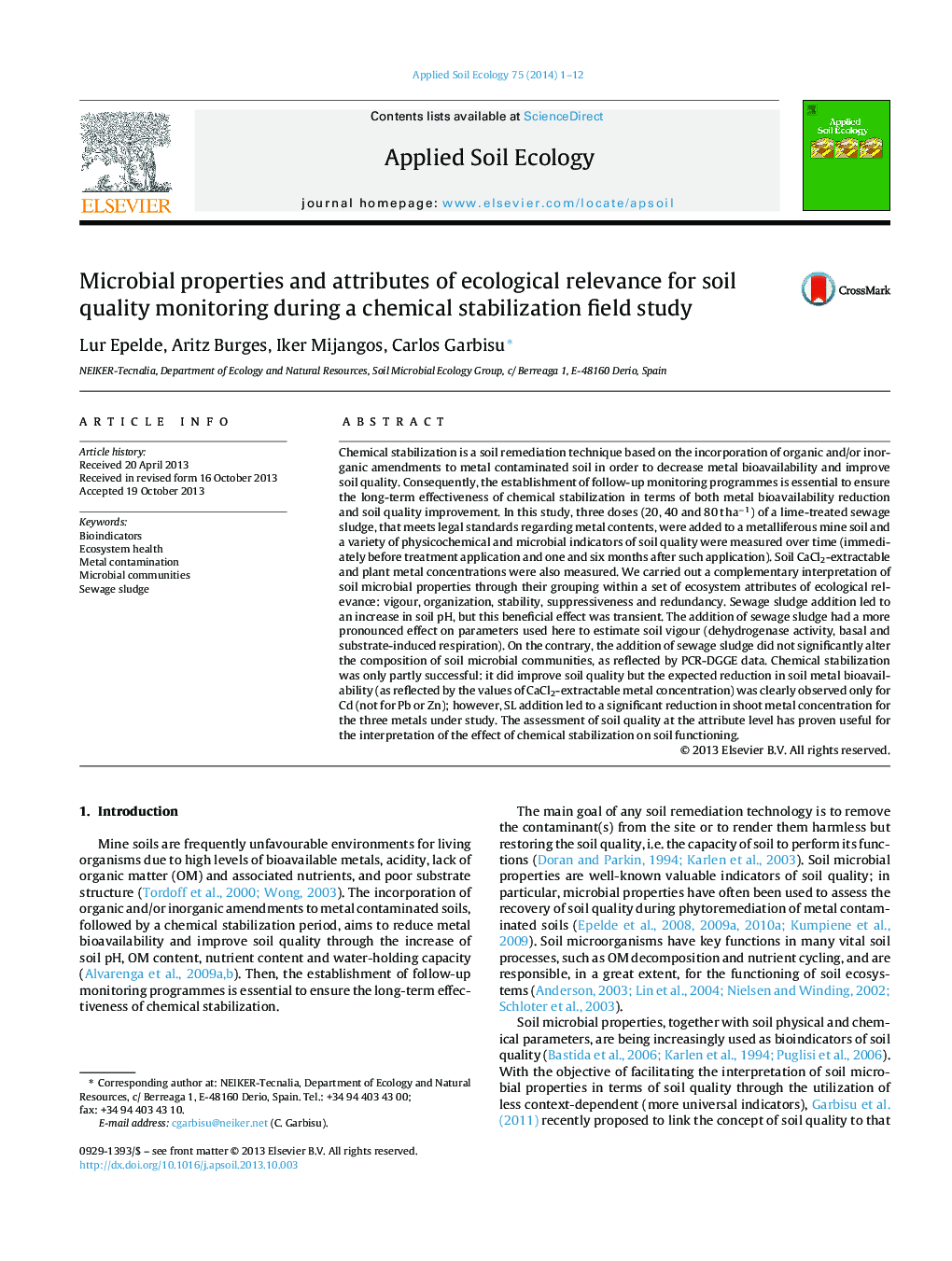| Article ID | Journal | Published Year | Pages | File Type |
|---|---|---|---|---|
| 4382274 | Applied Soil Ecology | 2014 | 12 Pages |
•Three doses of a lime-treated sewage sludge were added to a metalliferous mine soil.•Sewage sludge addition improved soil quality and reduced cadmium availability.•Soil pH and NH4+ content increased temporarily due to sewage sludge addition.•Microbial activity in soil increased but microbial composition did not change.•Grouping microbial properties within ecosystem attributes proved to be most useful.
Chemical stabilization is a soil remediation technique based on the incorporation of organic and/or inorganic amendments to metal contaminated soil in order to decrease metal bioavailability and improve soil quality. Consequently, the establishment of follow-up monitoring programmes is essential to ensure the long-term effectiveness of chemical stabilization in terms of both metal bioavailability reduction and soil quality improvement. In this study, three doses (20, 40 and 80 t ha−1) of a lime-treated sewage sludge, that meets legal standards regarding metal contents, were added to a metalliferous mine soil and a variety of physicochemical and microbial indicators of soil quality were measured over time (immediately before treatment application and one and six months after such application). Soil CaCl2-extractable and plant metal concentrations were also measured. We carried out a complementary interpretation of soil microbial properties through their grouping within a set of ecosystem attributes of ecological relevance: vigour, organization, stability, suppressiveness and redundancy. Sewage sludge addition led to an increase in soil pH, but this beneficial effect was transient. The addition of sewage sludge had a more pronounced effect on parameters used here to estimate soil vigour (dehydrogenase activity, basal and substrate-induced respiration). On the contrary, the addition of sewage sludge did not significantly alter the composition of soil microbial communities, as reflected by PCR-DGGE data. Chemical stabilization was only partly successful: it did improve soil quality but the expected reduction in soil metal bioavailability (as reflected by the values of CaCl2-extractable metal concentration) was clearly observed only for Cd (not for Pb or Zn); however, SL addition led to a significant reduction in shoot metal concentration for the three metals under study. The assessment of soil quality at the attribute level has proven useful for the interpretation of the effect of chemical stabilization on soil functioning.
